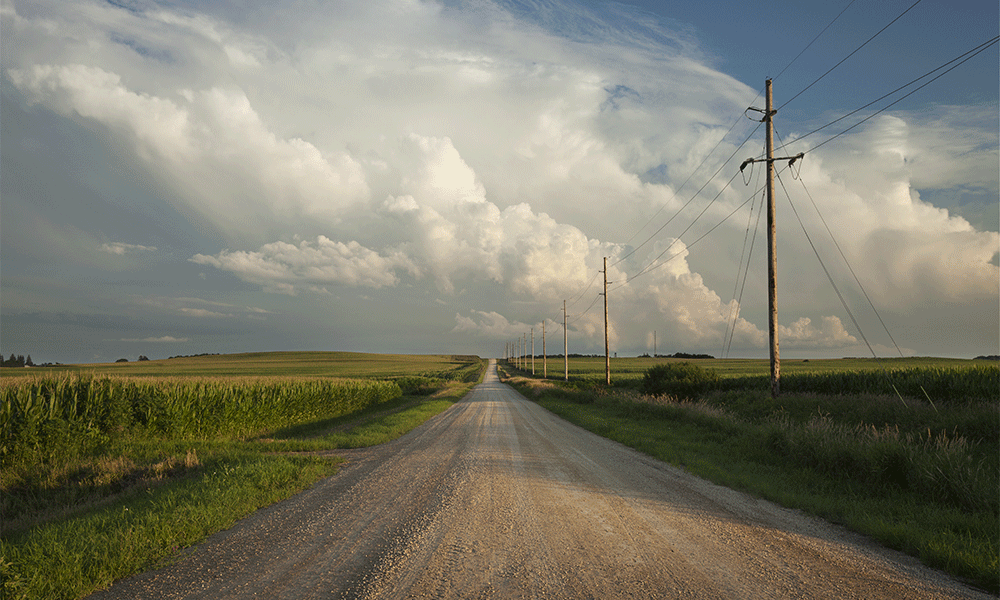Impacts of rural health care facilities on their communities
The reason rural health care facilities are so important is that rural residents face more significant barriers to healthcare.

Rural America often is portrayed as a pastoral, idyllic landscape where people live a slower, more meaningful life. But there is a darker side to this idealistic portrayal of rural America – healthcare outcomes. Rural residents have higher death rates due to heart disease, cancer, unintentional injury, chronic lower respiratory disease and stroke than their urban counterparts. Additionally, cause-specific mortality often is higher in rural counties than urban counties.
According to the Rural Health Information Hub, “Health disparities are differences in health status when compared to the population overall, often characterized by indicators such as higher incidence of disease and/or disability, increased mortality rates, lower life expectancies, and higher rates of pain and suffering. Rural risk factors for health disparities include geographic isolation, lower socioeconomic status, higher rates of health risk behaviors, limited access to healthcare specialists and subspecialists, and limited job opportunities.”
Hospitals are the linchpin in the medical system of rural communities. Rural hospitals offer care to patients that they otherwise wouldn’t be able to access and provide essential services such as emergency care, intensive care and surgical operations. Unfortunately, rural hospitals are closing at alarming rates – according to a study from the Center for Healthcare Quality and Payment Reform (CHQPR), nearly half of all rural hospitals are facing uncertain futures and are at risk of closing due to financial woes.
“Over 500 rural hospitals – more than one-fourth of the rural hospitals in the country – are at immediate risk of closure because of continuing financial losses and lack of financial reserves to sustain operations,” the study said. “Almost every state has at least one rural hospital at immediate risk of closure, and in 21 states, 25% or more of the rural hospitals are at immediate risk.”
The reason rural hospitals are so important is that rural residents face more significant barriers to healthcare, such as:
Lack of providers
According to the National Center for Health Workforce Analysis, fewer than 8% of all physicians and surgeons practice in rural regions. This results in rural populations being severely underserved, resulting in health disparities in rural regions and decreased health equity for rural populations. Rural hospitals have a hard time attracting and retaining enough providers to serve the local population.
Increased risk factors
Rural populations have higher rates of risk factors such as smoking, obesity and physical inactivity, which contribute to the higher mortality rates in rural areas.
Higher rates of underinsured and uninsured patients
Rural residents tend to have lower incomes and fewer folks covered by employer-sponsored healthcare plans, which makes the presence of safety-net hospitals in rural communities even more vital to the overall wellbeing of its residents.
Lack of specialty services
Rural areas typically lack specialty medical practitioners that are more prevalent in urban areas. Additionally, hospitals can provide specialty services that are unavailable elsewhere in the community. Safety net hospitals, which provide services to residents regardless of a patient’s ability to pay, are especially crucial.
Through my work with safety net hospitals, we have brought state-of-the-art medical imaging services to underserved communities, such as providing mobile medical imaging services to the Austin and Jackson Park communities.
“Almost all the rural hospitals that are at immediate or high-risk of closure are in isolated rural communities. Closure of the hospital would mean the community residents have no ability at all to receive emergency or inpatient care without traveling long distances. In many small rural communities, the hospital is the only place where residents can get laboratory tests or imaging studies, and it may be the only or principal source of primary care in the community,” the CHQPR study said.
I believe that multi-system programs will fill a growing need in today’s quality conscious healthcare environment.I am passionate about access to healthcare and making sure that everybody, no matter where they live or their socioeconomic condition, has equal access to high-quality healthcare services.
Sameer Suhail, MD, entrepreneur, healthcare investor, and philanthropist, has extensive experience working with large facilities and specialty providers across the healthcare industry. Dr. Suhail’s companies provide management services to a wide array of providers and physician practice groups. Collectively, they provide coding, billing, and collection services, procurement of medical supplies and equipment, outpatient pharmacy operations, and diagnostic imaging services. As well as providing healthcare facilities with professional staffing needs. Dr. Suhail is a leader in providing opportunities in the United States for domestic and foreign trained medical students and graduates through his award-winning clinical clerkship and residency programs. He is passionate about providing quality healthcare for local communities, particularly those in underserved urban and rural communities.
Asset Protection and Financial Planning
December 6th 2021Asset protection attorney and regular Physicians Practice contributor Ike Devji and Anthony Williams, an investment advisor representative and the founder and president of Mosaic Financial Associates, discuss the impact of COVID-19 on high-earner assets and financial planning, impending tax changes, common asset protection and wealth preservation mistakes high earners make, and more.